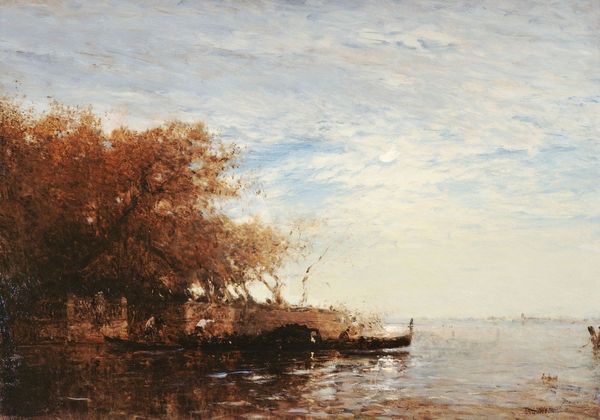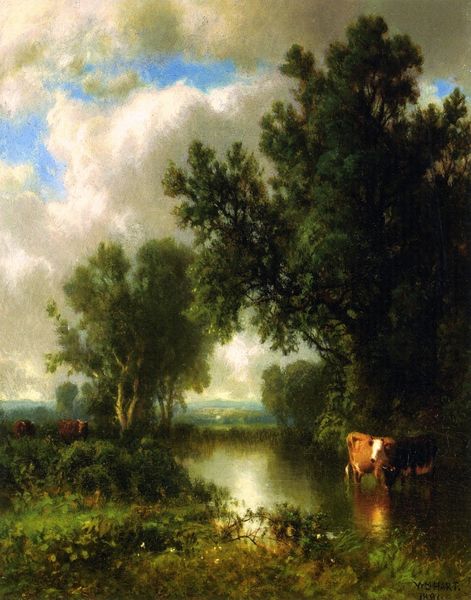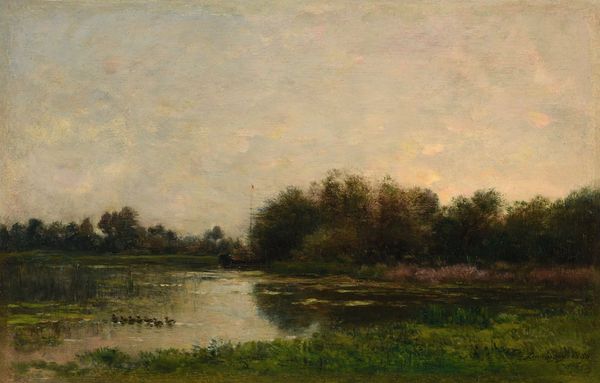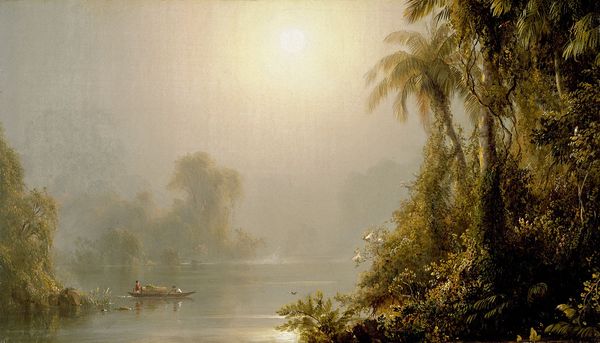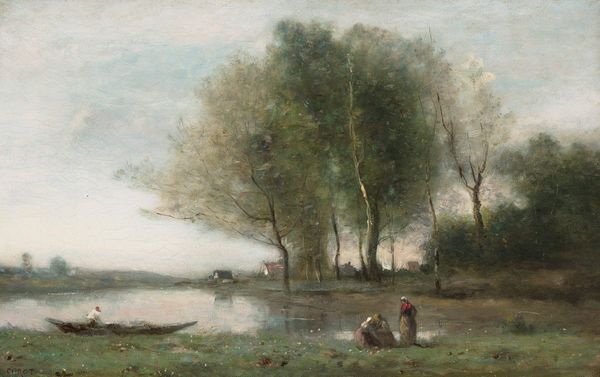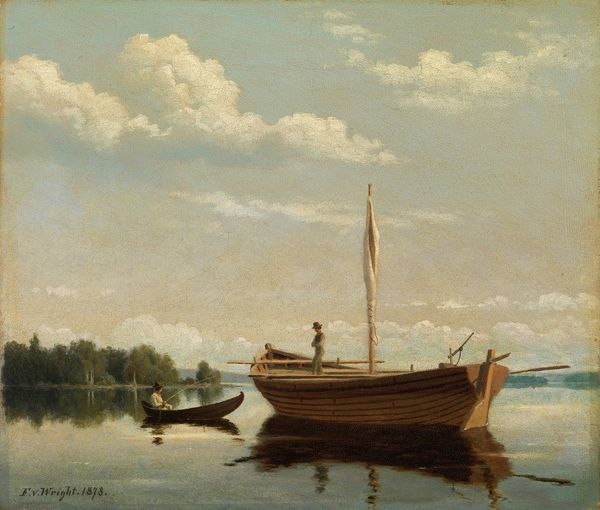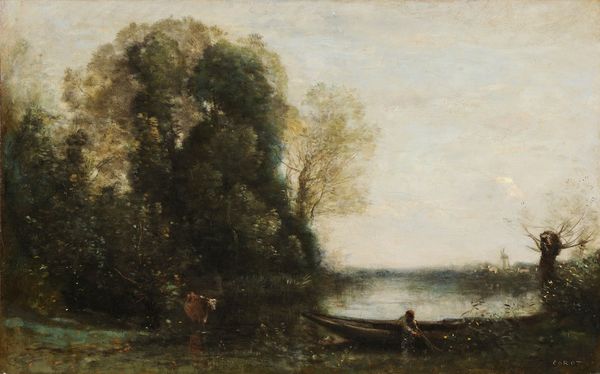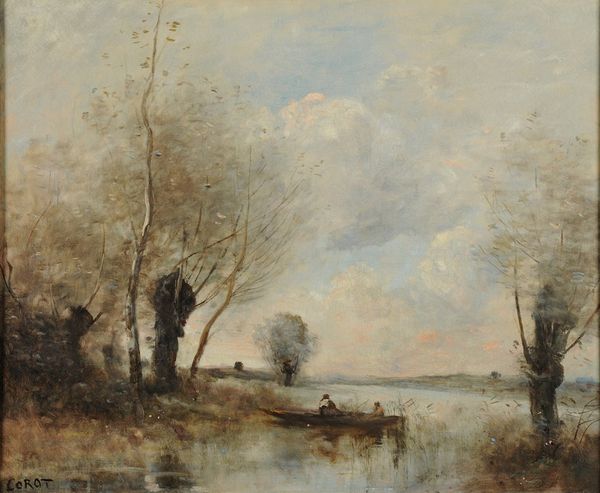
Dimensions: 51.8 x 81.9 cm
Copyright: Public domain
Curator: Looking at Daubigny’s “The Virgin Islands In Bezons,” painted in 1855, the immediate sense I get is one of quiet stillness. What are your initial impressions? Editor: It strikes me as undeniably peaceful. The horizontal composition, coupled with the soft, muted greens and blues, creates a harmonious balance. The reflections on the water amplify this sense of tranquility, almost like a mirror doubling the serenity. Curator: It’s interesting to consider this work in the context of the rapidly industrializing France of the mid-19th century. Daubigny and other painters associated with the Barbizon School actively sought out these rural landscapes, rejecting the increasingly urban environment of Paris. The painting can thus be viewed as a subtle form of social commentary, a longing for a simpler, more natural existence, away from the disruptive impacts of modern industry. Editor: I see your point. Viewing the composition formally, it is an interplay between horizontal planes of water and land against a more diffused, soft rendering of the sky above. There’s something about the textured brushstrokes that lends tactility to the piece, especially in the trees and the suggestion of movement in the water. It also creates an interesting tension with the almost diagrammatic quality of the boats and their rigging, and creates some visual interest by contrasting the soft and somewhat muted surrounding details with these sharp, darker shapes. Curator: The figures are missing! They are absent in this portrayal of rustic life; you are only given the unblemished landscape. By strategically focusing on the scene devoid of figures, he is emphasizing his statement. I agree that the boats’ presence contributes texture, and maybe implies that others use and frequent this landscape. Editor: That lack of human presence definitely focuses the viewer’s attention on the landscape's pure form, but the artist also manages to give these forms just enough substance to lend the view a compelling realness. You also perceive a sort of visual harmony in nature, where everything comes together in these well balanced tones. It is a powerful depiction in that sense. Curator: Absolutely. Daubigny's choice to paint "en plein air", was somewhat innovative at the time. In some ways, by representing how art could reflect the public imagination around idealizations of the countryside. Daubigny also pushes the boundary. Editor: Daubigny has really managed to achieve an effortless sense of balance and stillness, and by doing so to also communicate a palpable and universal kind of peace in our chaotic world. Curator: A quiet but compelling work, when one looks at the history behind it.
Comments
No comments
Be the first to comment and join the conversation on the ultimate creative platform.


